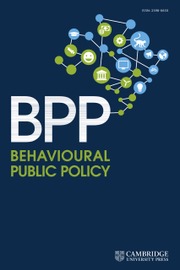Article contents
‘Come on, man!’ On errors, choice, and Hayekian behavioral economics
Published online by Cambridge University Press: 15 September 2021
Abstract
With respect to the views of dead thinkers, answers to many particular questions are often interpretive in Ronald Dworkin's sense. Such answers must attempt (1) to fit the materials to be interpreted and (2) to justify them, that is, to put them in the best constructive light. What looks like (1), or what purports to be (1), is often (2). That is, when a follower of Kant urges that ‘Kant would say x’, or that ‘Kantianism entails y’, the goal is to make the best constructive sense of Kant and Kantianism, not merely to adhere to something that Kant actually said. An approach to behavioral economics cannot claim to be Hayekian if it is rooted in enthusiasm for the abilities of planners to set prices and quantities, or if it sees the price system as a jumble of mistakes and errors. But within a not-so-narrow range, a variety of freedom-preserving approaches, alert to the epistemic limits of planners, can fairly claim to be Hayekian. Hayekian behavioral economics, I suggest, is an approach that (1) recognizes the importance and pervasiveness of individual errors, (2) emphasizes the epistemic limits of planners, (3) builds on individual choices rather than planner preferences, and (4) gives authority to choices made under epistemically favorable conditions, in which informational deficits and behavioral biases are least likely to be at work. The key step, of course, is (4). If it is properly elaborated, the resulting approach deserves respect. It is worthy of serious consideration, even if some of us, including the present author, would not entirely embrace it. In defending that proposition, the present essay responds to some critical remarks on behaviorally informed policy, including the resort to ‘explainawaytions’ (Matthew Rabin's term) for behavioral findings.
Information
- Type
- Response
- Information
- Copyright
- Copyright © The Author(s), 2021. Published by Cambridge University Press
References
- 3
- Cited by

